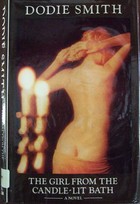Sellery, Bruce. Moolala. ; Why Smart People Do Dumb Things with Their Money – And What You Can Do about It. McClelland & Stewart, 2011. Print.
I heard of this book through Ramit Sethi, a blogger who writes about money, both saving it and making it. Sethi is big on the psychology of money, and recommended this as a book that will actually help, since it addresses that side of money management.
I got the book out of the library, read it in a week, and asked my husband to read it too. When I had to return it after 9 weeks, I promptly put it on hold again, and I’ll have to take it back again tomorrow. I plan to put it right back on hold again! We’re working our way through it, chapter by chapter, reading it together and doing the exercises.
I like the way Sellery starts with motivation and accountability, which as a teacher I know makes all the difference if you actually want to get people to learn something or change their behaviour. If I tell you that Sellery wants you to talk to your “community” as part of your financial planning, I risk making you not want to read the book, but it will illustrate how the advice is outside of what you normally get in a financial planning book. Don’t worry, he gets into the guts of dealing with a financial advisor and ETFs (Exchange Traded Funds), so it’s useful all around. Highly recommended.









